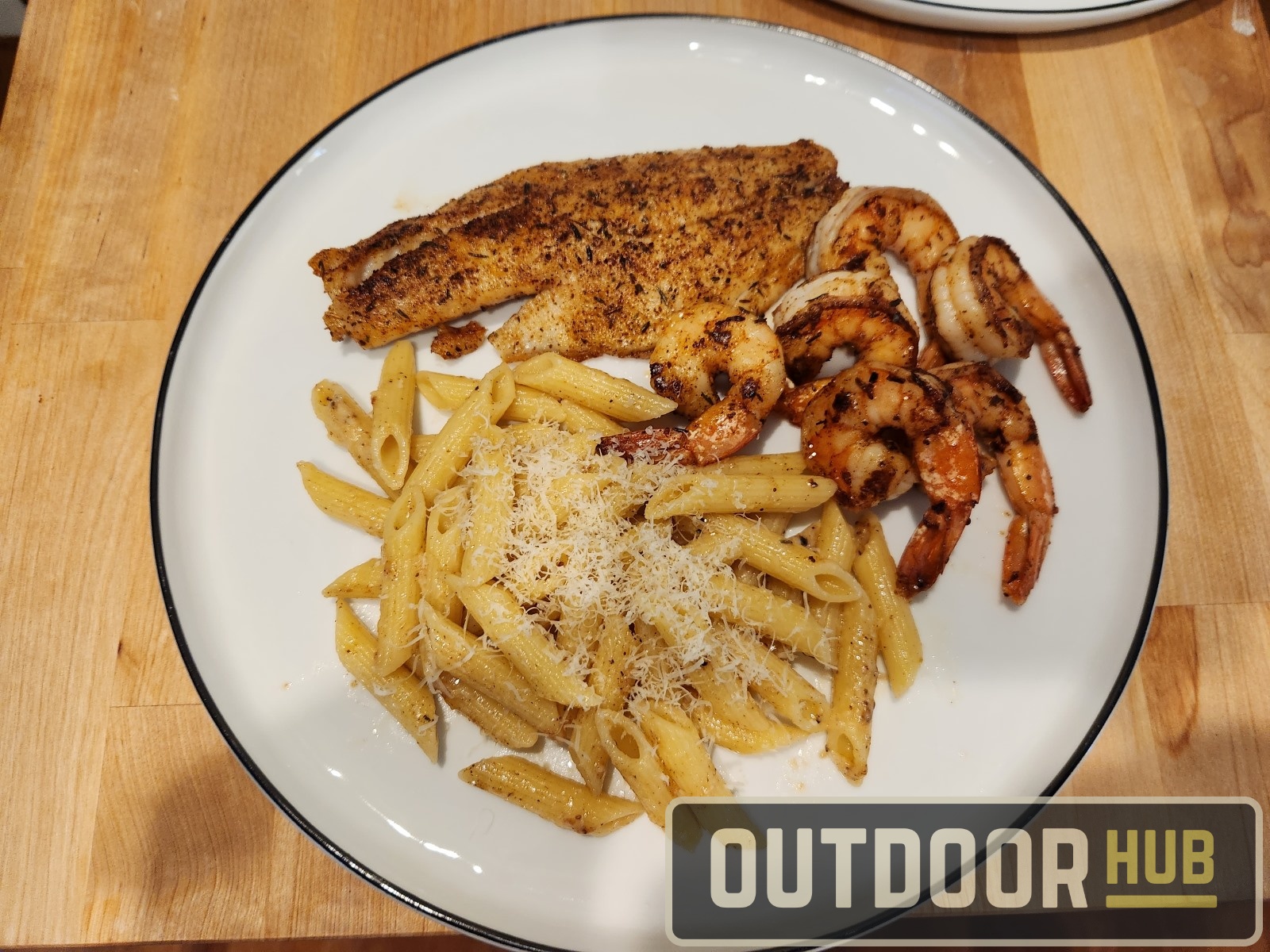Breaking it Down: Blackened Coosa River Striper
Eugene L. 08.29.23

The Striped Bass (Morone saxatilis) is an incredibly popular species of gamefish around the country. They originally come from the Eastern United States in both the Atlantic Ocean and the Gulf of Mexico, which are actually two different populations. Both populations though are anadromous species that swim up the coastal rivers of the Atlantic and Northern Gulf to spawn. They are probably the top gamefish to catch from the surf for most of the Atlantic coast. But just because they come from the ocean doesn’t mean you can’t catch them if you’re in a landlocked state. Striper have been commonly stocked in many reservoirs all over the US, as they are capable of surviving and thriving in fully freshwater environments. They have even been introduced into the Pacific Ocean, where while they are popular species to catch they are causing issues for native salmon species.
As gamefish, they are considered amazing fighters that are capable of reaching over 70 pounds with the world record being a little north of 80 pounds. As table fare, they are also well esteemed, considered to be quality meat with white flesh and good flake. This has actually brought up concerns of overfishing in both the recreational and commercial sectors in the Atlantic Ocean. So the striper I’m cooking up today is actually a fully freshwater striper out of the Coosa River. A perfect eating size for a river fish, it’s better to let the big girls go anyways.
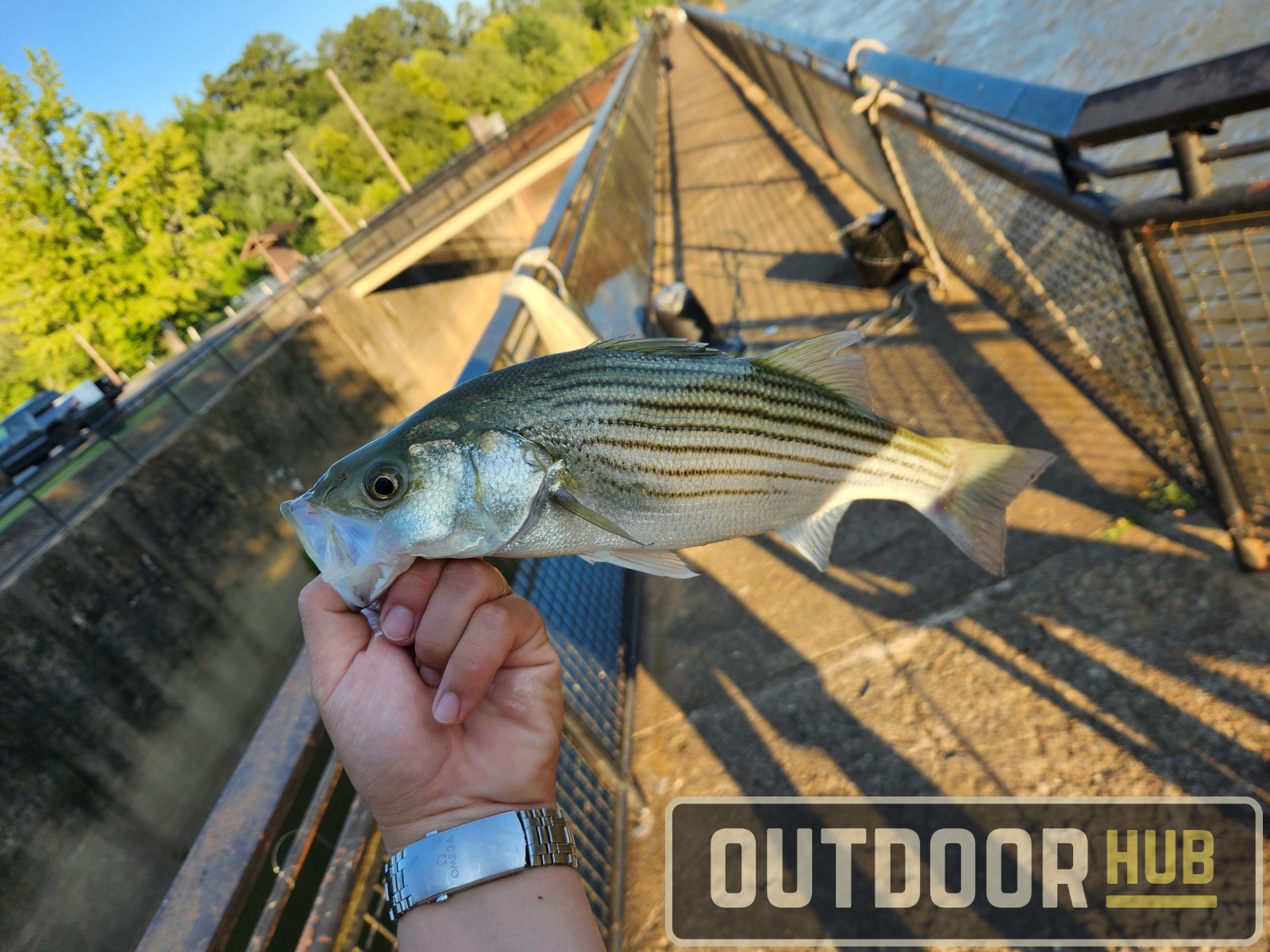
Breaking it Down on OutdoorHub
- Breaking It Down: Filleting an American Red Snapper
- Breaking it Down: Cleaning Spring Squid – (Sautéed Calamari)
- Breaking it Down: Knobbed Porgy (Chinese Steamed Fish)
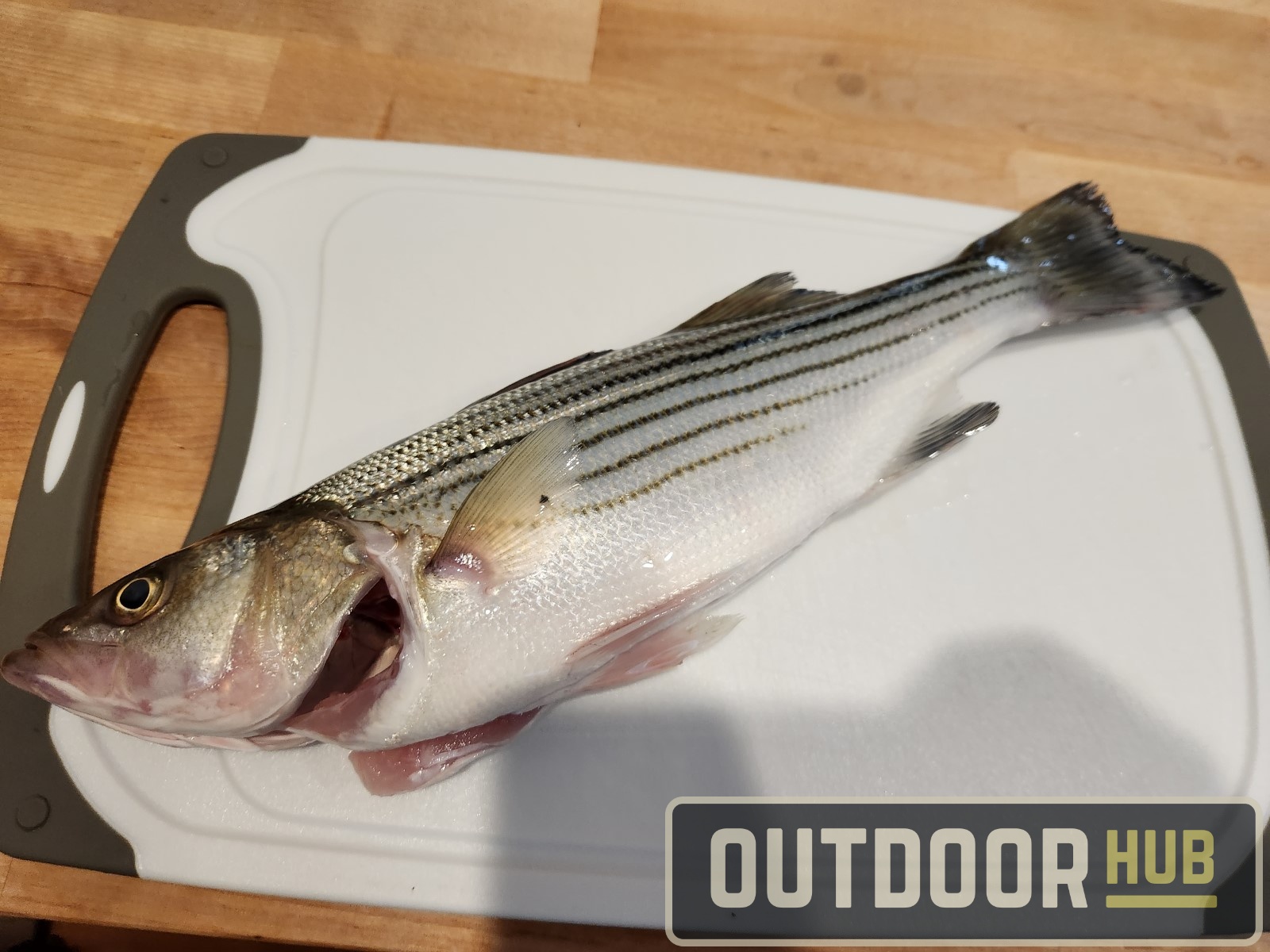
Ok now for the breakdown, it is a usual method of filleting and skinning the fish today. For initial prep after catching the striper is the same as usual, bleed then slush. You want to always bleed out your fish for the best quality meat. I also recommend gutting as soon as possible, this lets the fish’s core temp drop even faster and helps draw more blood out. Also, it’s just cleaner to gut on or near the water, no need to have guts in your kitchen trashcan.
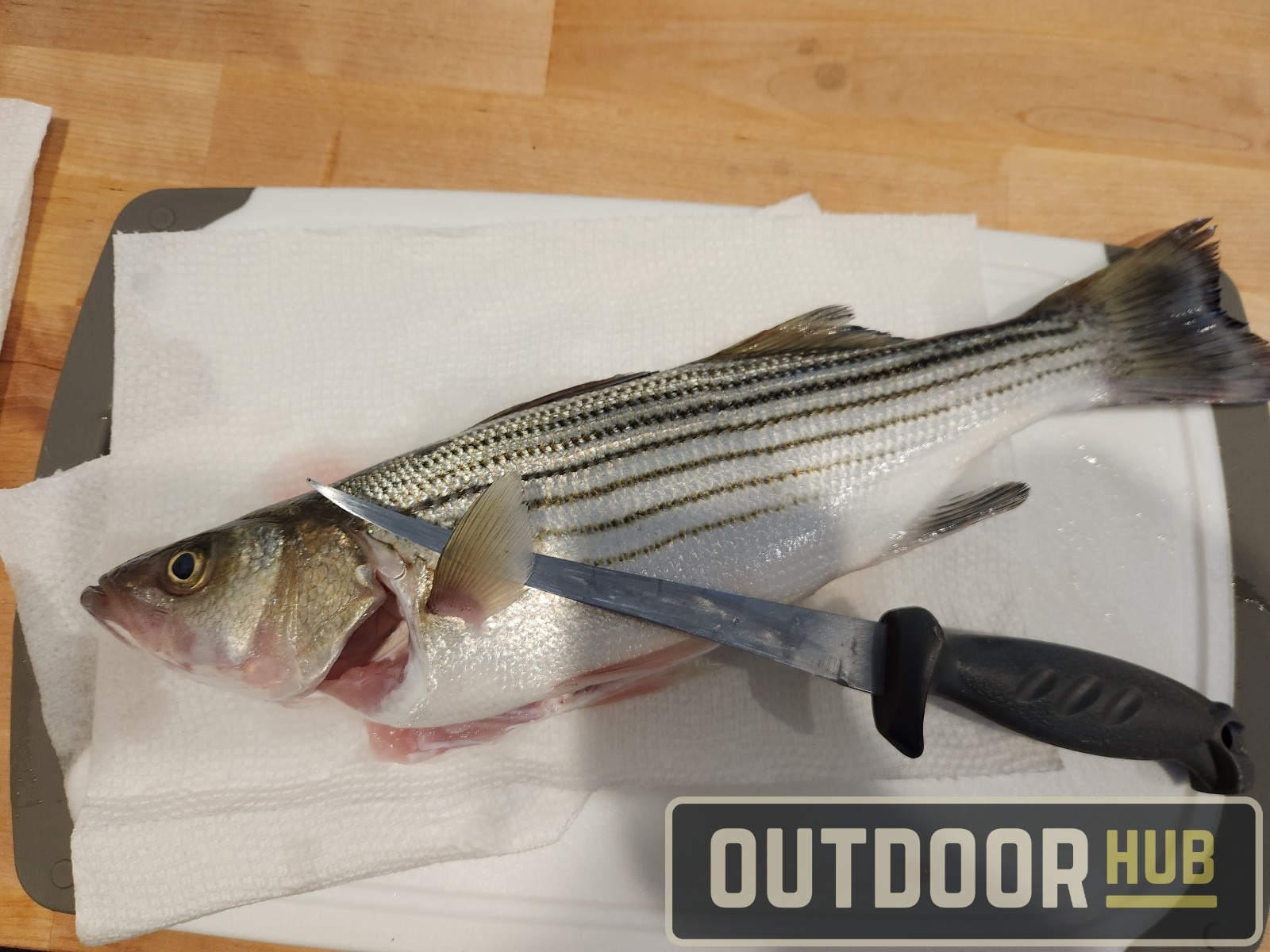
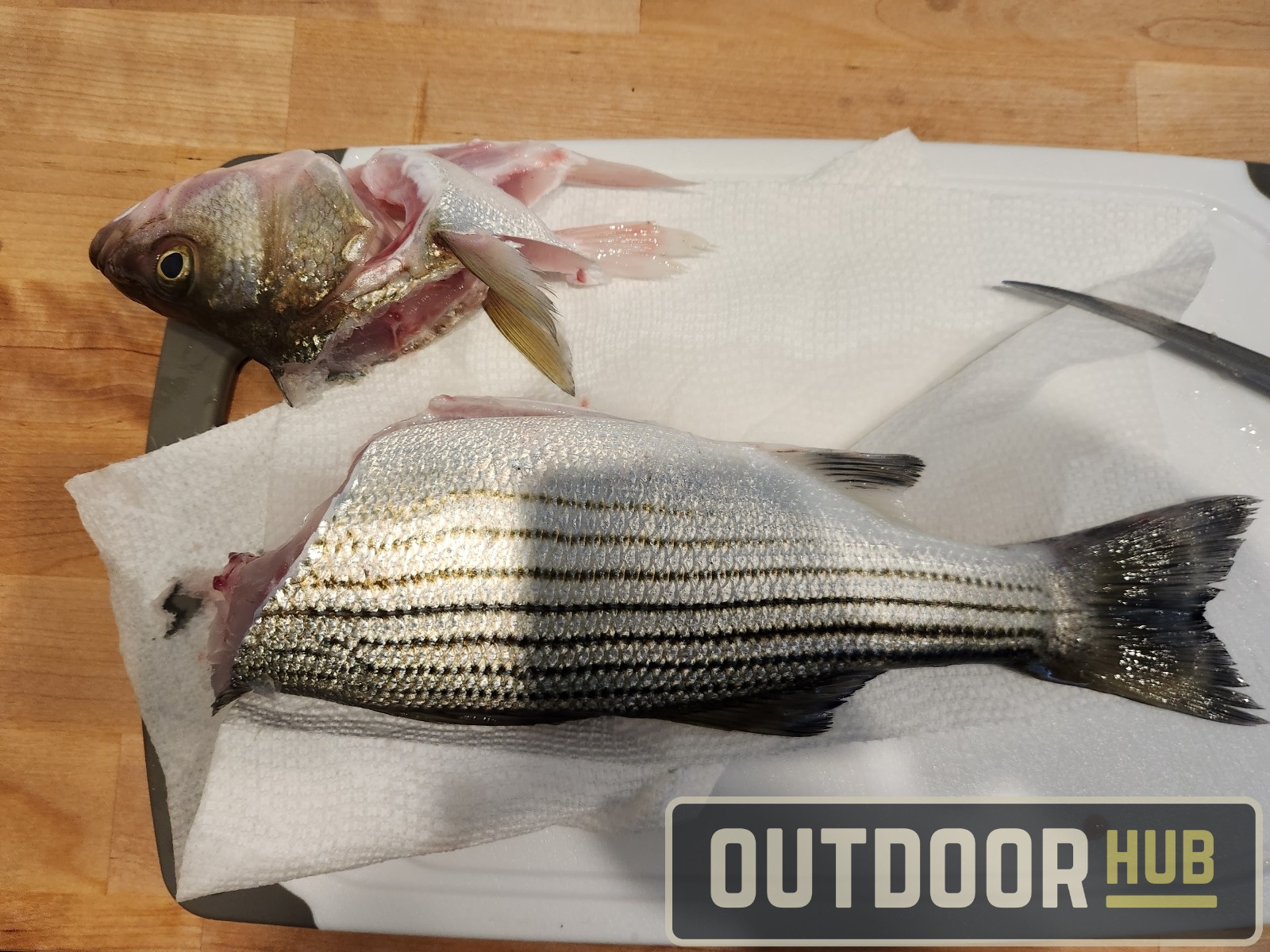
Step one is to take the head and collars off, you can keep them for stock I chose not to this time because of a full freezer. Cut from right behind the head down along the collar to behind the pelvic fins. Once you do this on both sides you can just pull the head back and it’ll pop the spine and come off.
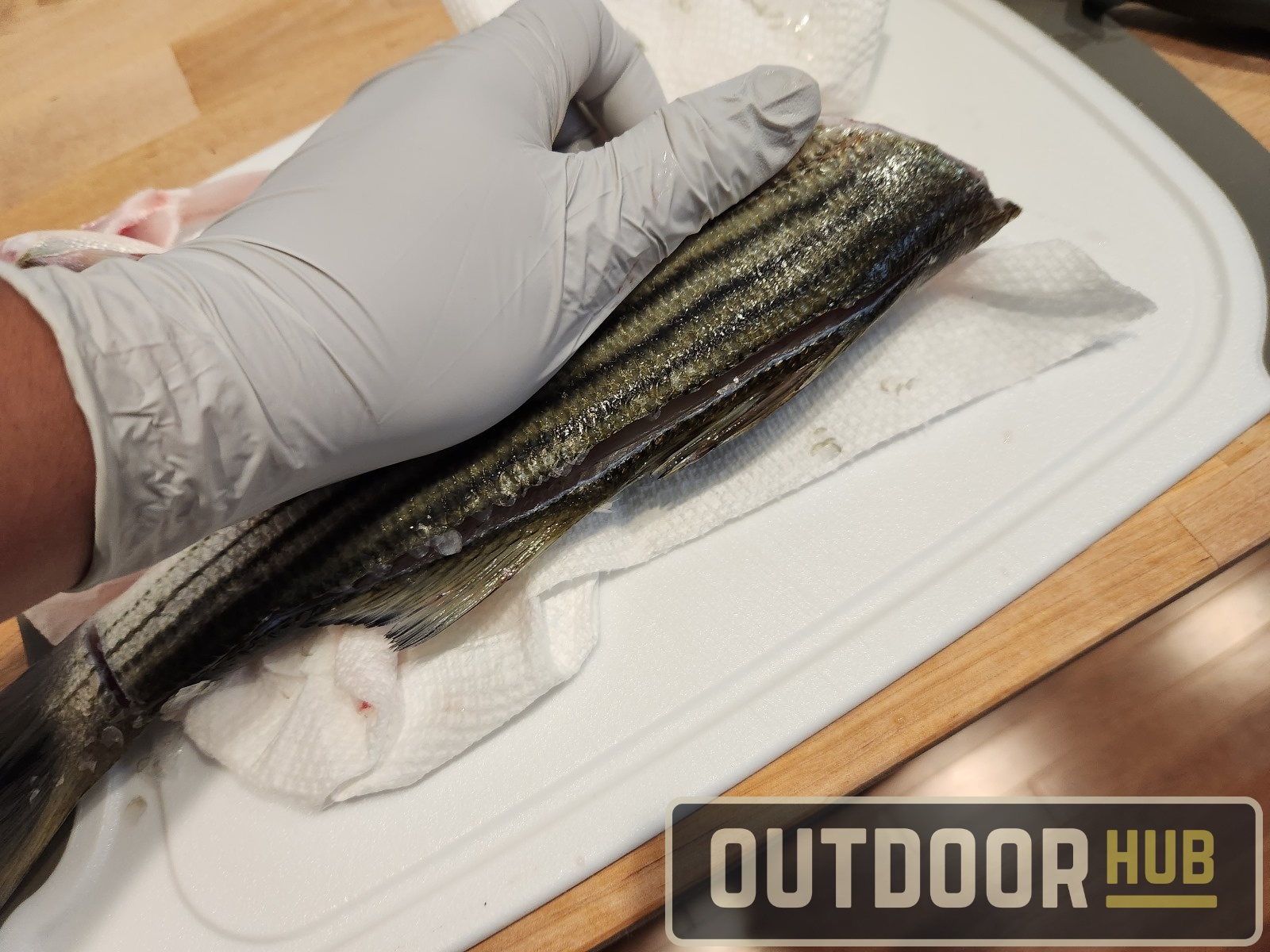
First, cut along the back along the fins, getting through the scales and opening up the whole back. Then apply a little pressure to the fillet to slightly lift up the fillet so you can cut along the bones easier.

Slice along the bones while gently lifting the fillet until you get to the spine. There you want to carefully want to make shallower cuts that follow the contour of the spine. Make sure not to cut too deep in these cuts as you can easily cut into the bottom half of the fillet.
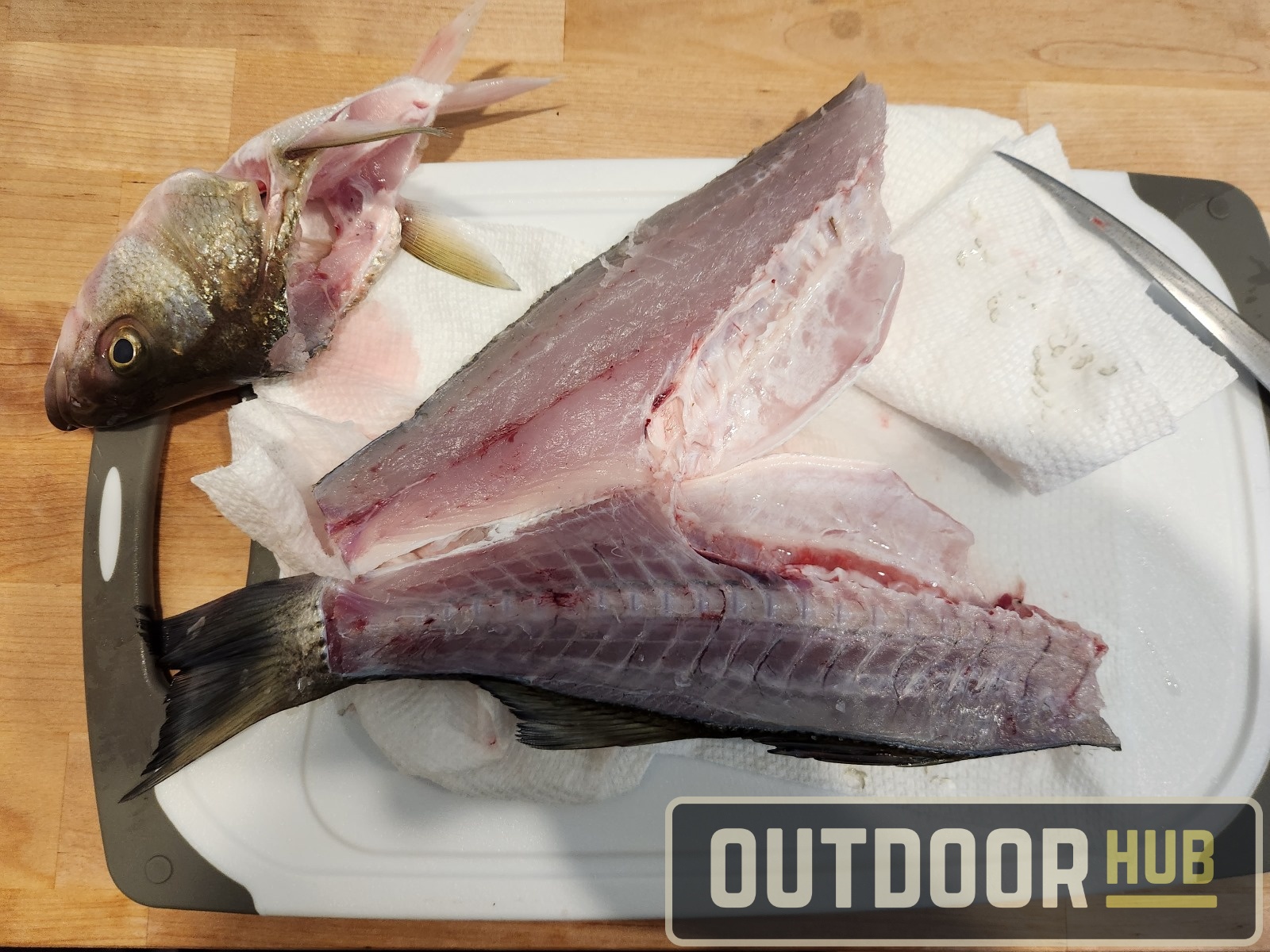
With a fish this small you can either just cut out the ribcage since the belly flap will be very thin, or you can keep the ribcage on to keep a little more meat. I chose to keep the ribcage on the fillet to trim it off later.
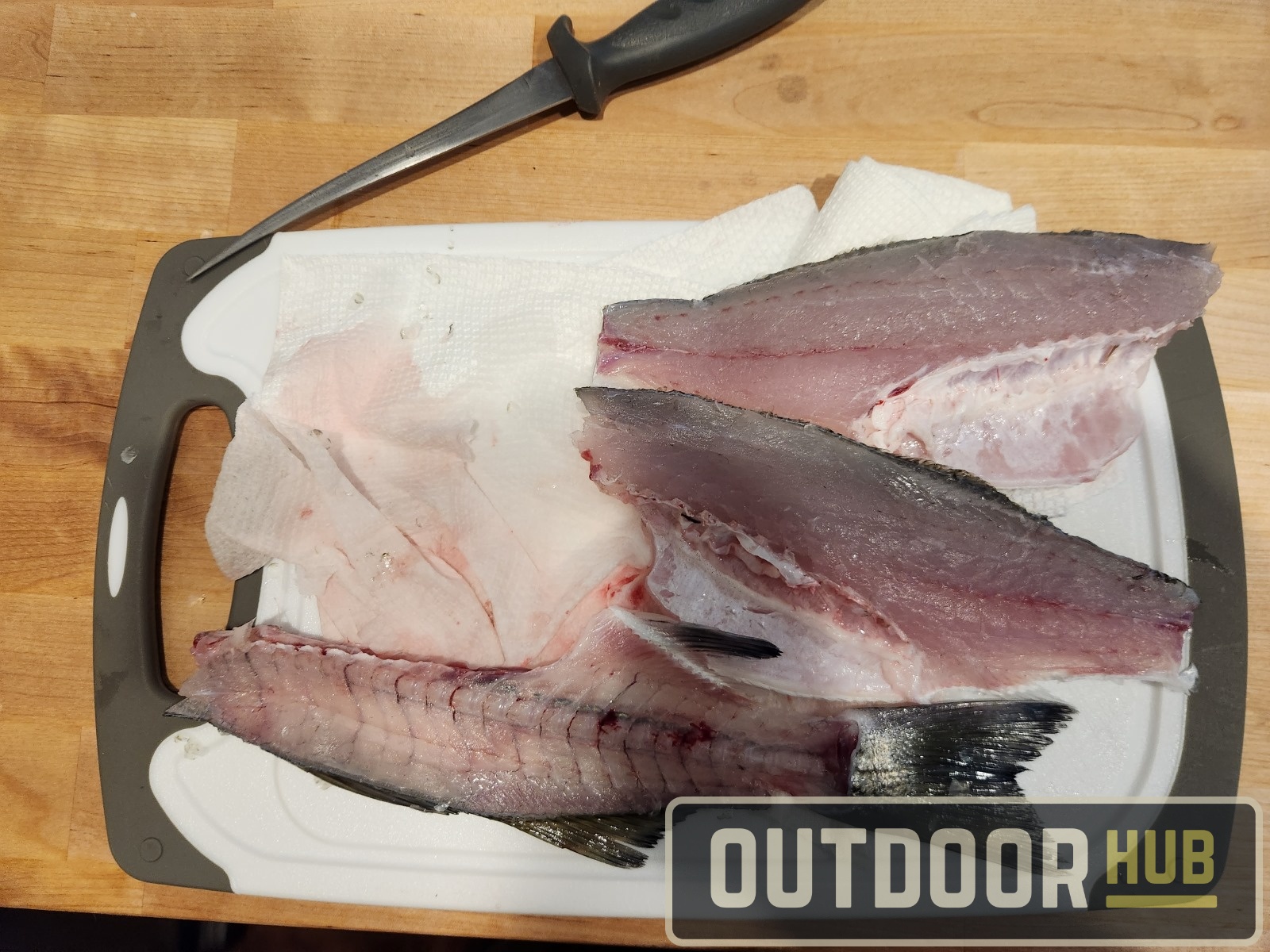
Repeat the steps to fillet both sides of the fish. Then cut along both sides of the center line of the fillet to cut the pin bones out. This is a little row of bones right above the ribcage. Trim out the ribcage at this step as well. The next step is to skin the filet. This is why we kept the scales on earlier, they act as a backing to the skin so your knife doesn’t push through as easily. To skin the fillet take your fillet knife and start at the tail, pushing the knife forward at a shallow angle. You want to keep the knife angle very shallow trying to follow the cutting boards. Once the fillets have been skinned, pick off any scales then wrap them in paper towels and put them away in the fridge till its time to cook.
Breaking it Down: Blackened Coosa River Striper
Blackened Striped Bass Ingredients
- Blackening Seasoning (Pre Made or Homemade)
- Butter
- Oil
- Fish Fillets
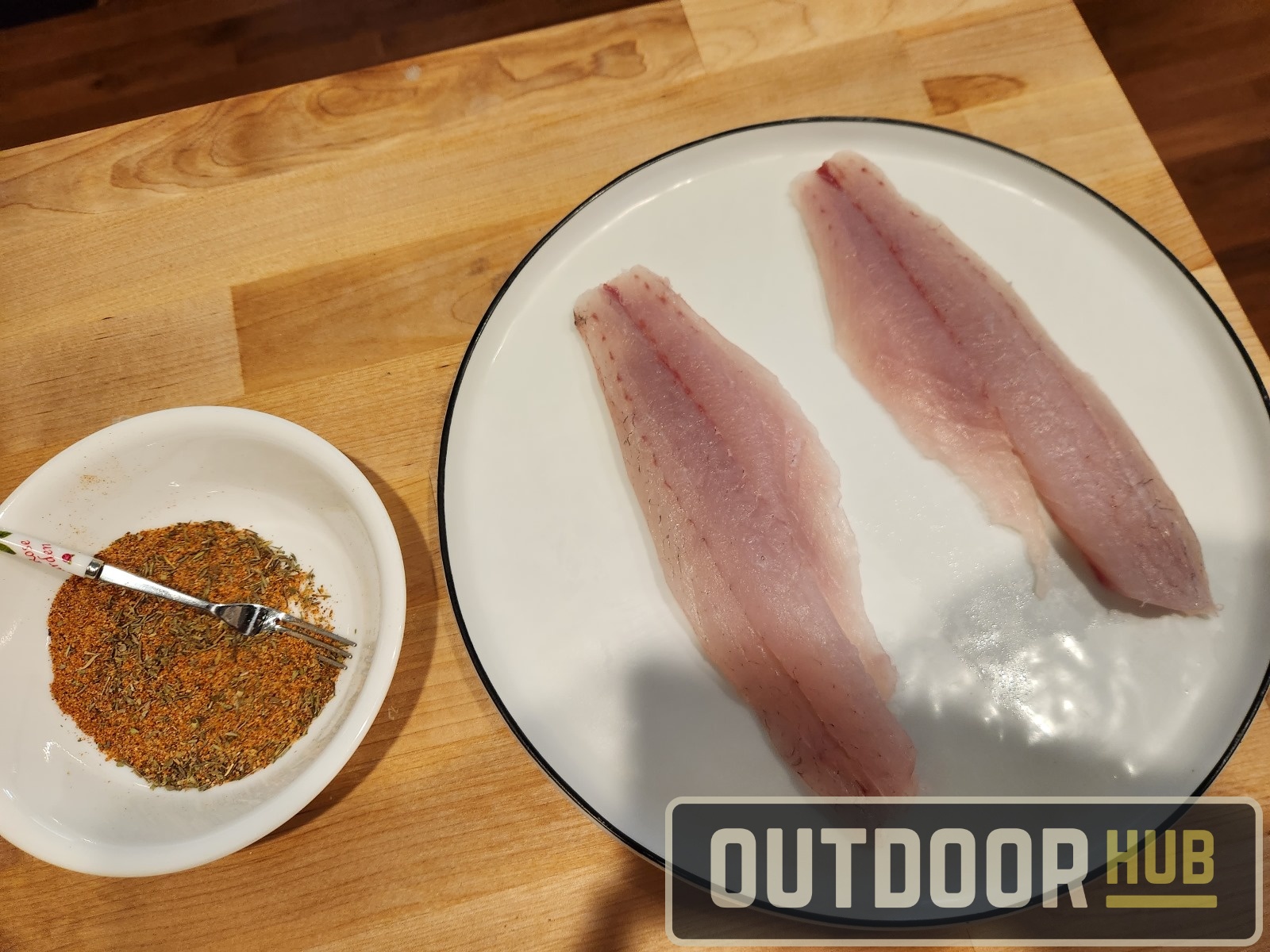
Ok to blacken the striper fillets, get some blackening seasoning. Homemade or store-bought seasoning will work, I had to make some mainly because I lost my usual seasoning in my move. Evenly season both sides of the fillet and rub it in, then set aside,

For blackening fish, I recommend cooking outside on a propane burner. Unless you have a very good kitchen hood, you’re going to smoke out your house. Add some butter to the hot pan, I recommend cast iron but mine was unavailable. Add a touch of oil and let the butter brown on high heat before adding the fillets into the pan.
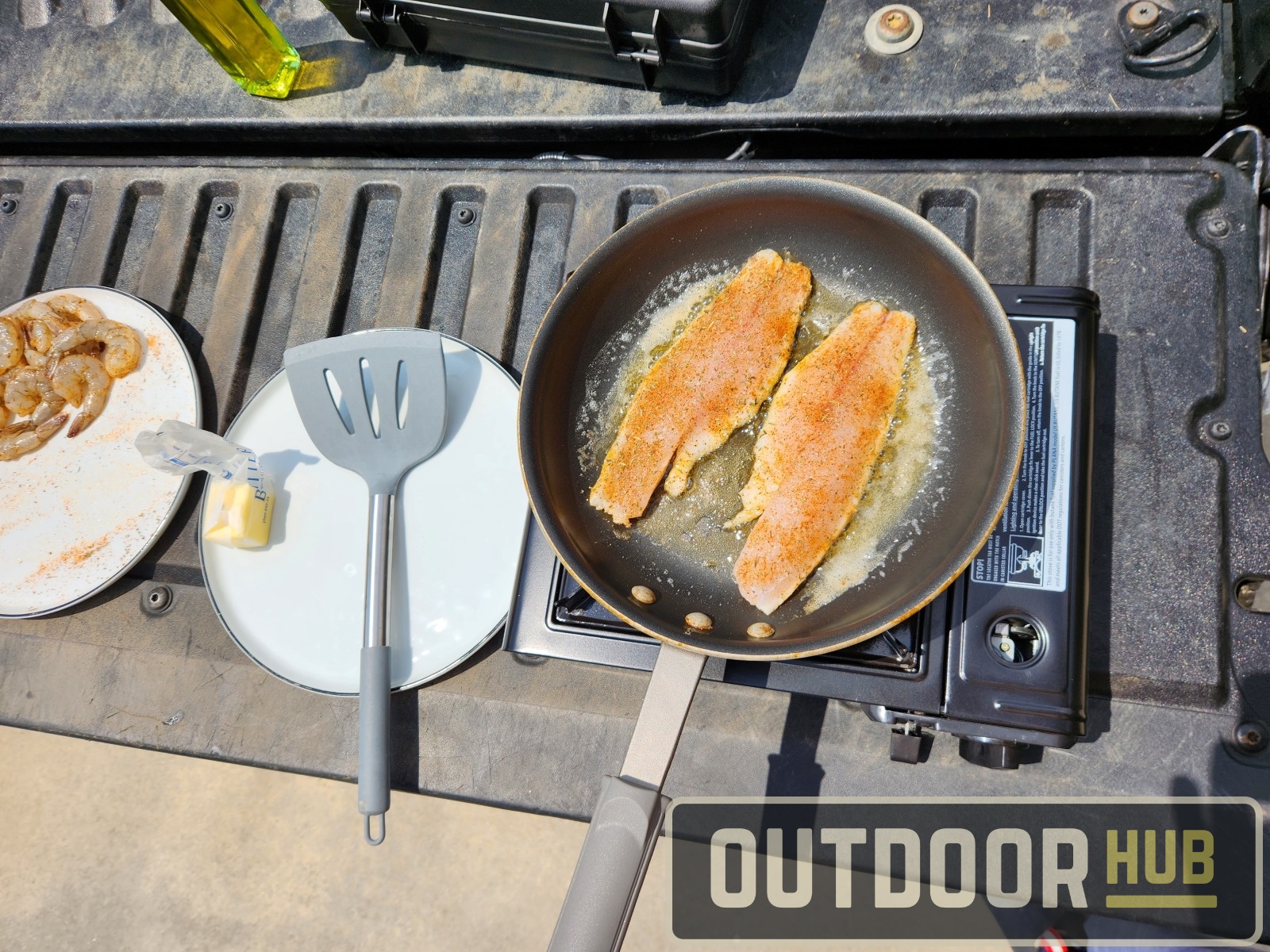
Let the fish cook on the first side without moving the fillets around. Just let them fry for a few minutes till you start seeing the opaqueness move up most of the way through the fillets. Then give them a flip and cook again for a couple of minutes to finish.
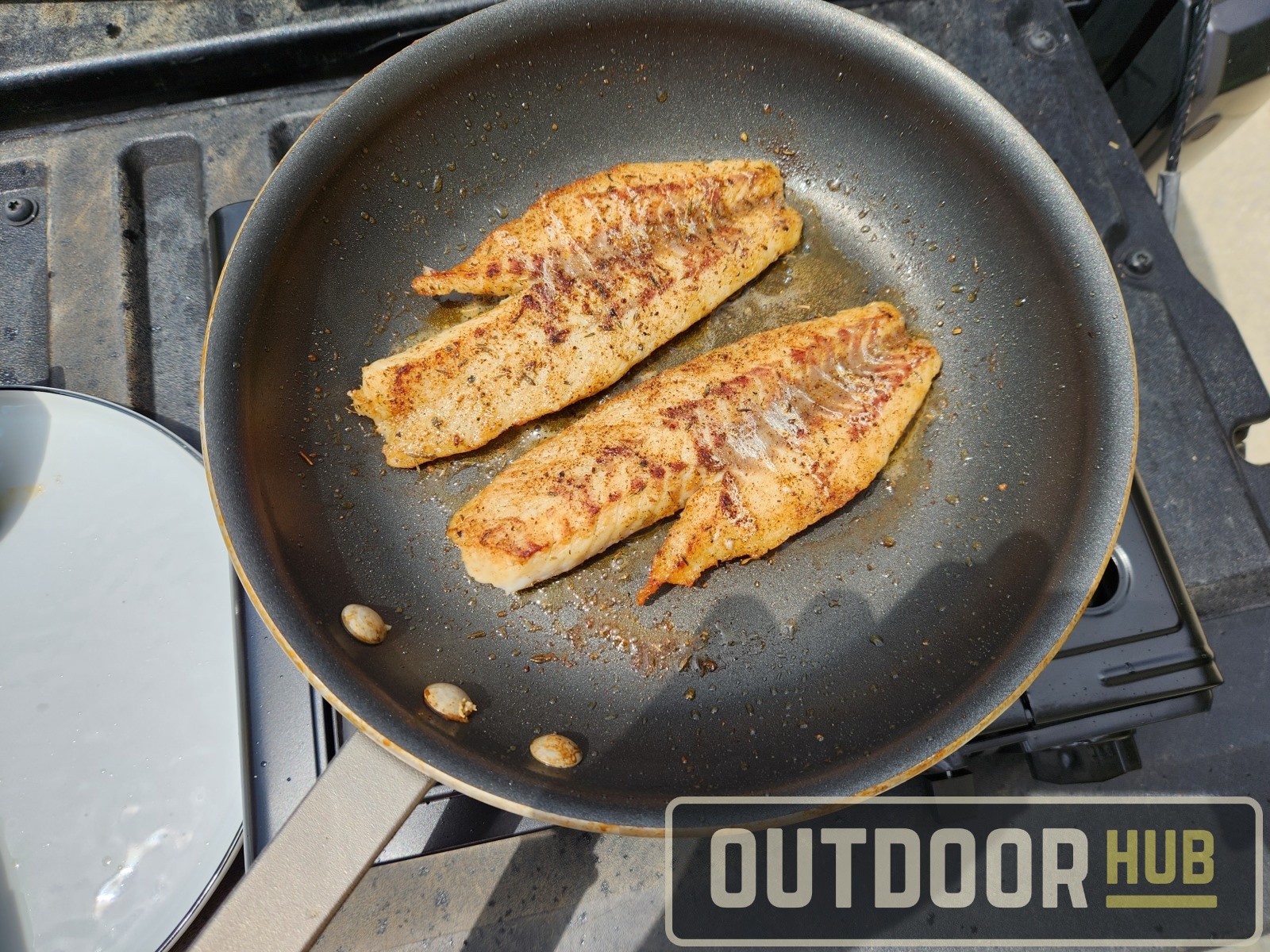
After that take them out of the pan and serve right away. You want some char when you blacken fish, my butane stove and non-stick pan just weren’t getting hot enough for the char but it’s ok. I cooked up some shrimp and pasta along with my fish, but it’s all up to your personal preference.
